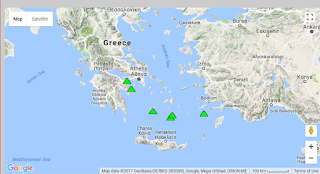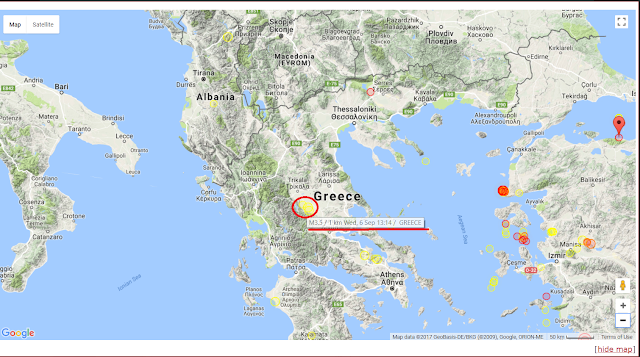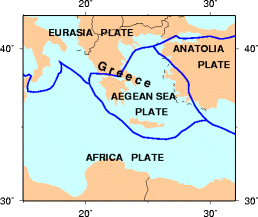Greece's Main Natural Hazards

There are several natural hazards and threats that can affect the beautiful country that is Greece. However, two of the largest threats to the country in terms of mother nature's fury are earthquakes and volcanoes. These two hazards have caused great damage throughout history. Greece is located in the Mediterranean Sea and is one of the most seismically active countries in the world. Greece ia seismically active due to its unique location in between tectonic plates. It sits in between the Eurasian, Aegean, and African plates, which are all constantly moving against one another at speeds of up to 30 millimeters per minute. This constant movement triggers seismic activity up in the northern and central areas of Greece. As a result, several earthquakes are bound to happen, some small, others large and destructive. Down below is an image depicting Greece's location within its surrounding tectonic plates. The Greek island of Kos experienced a terrible earthquake back in July of 2...





